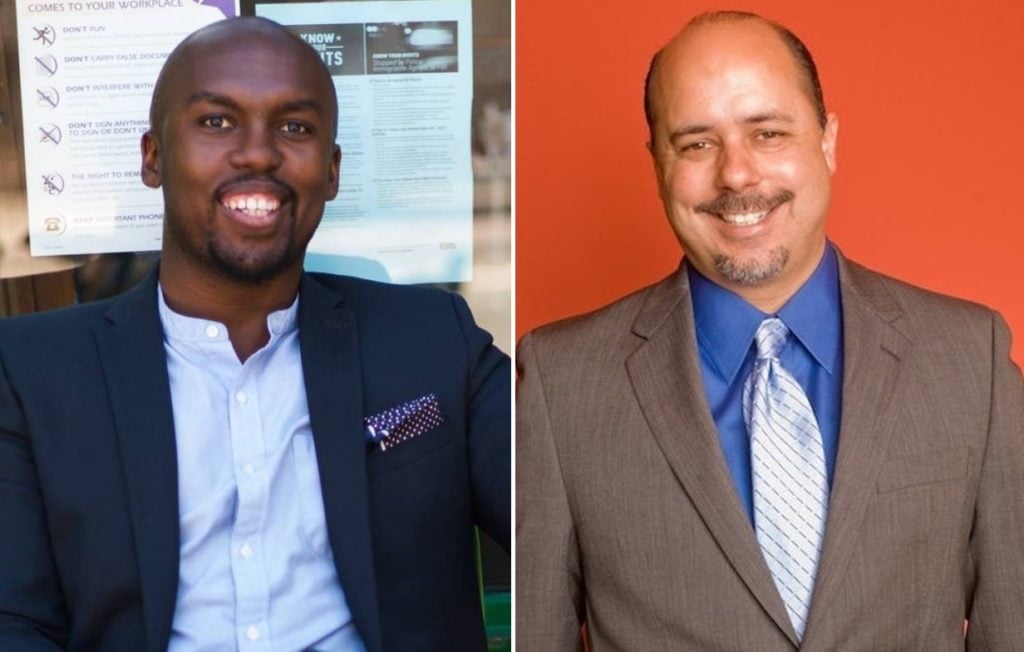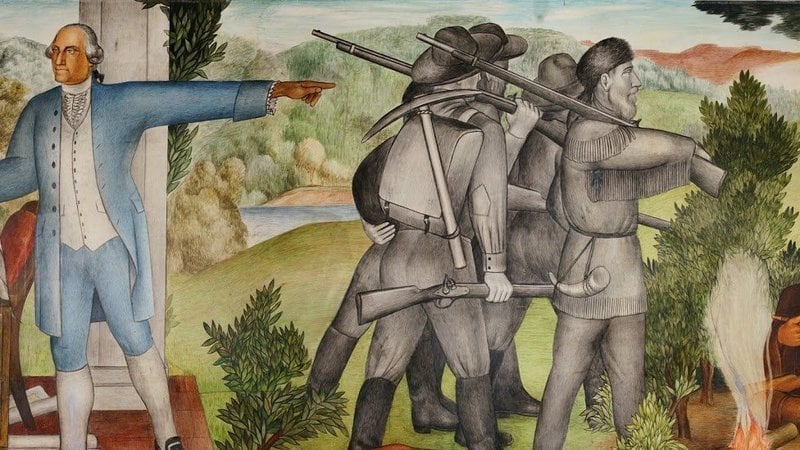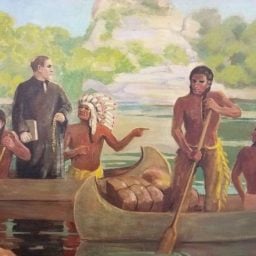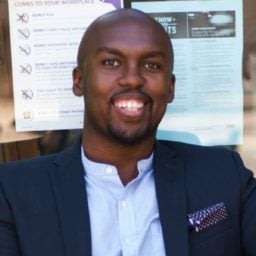The San Francisco Board of Education has decided to cover up a series of controversial murals at George Washington High School, reversing an earlier decision to destroy the works.
The board met last night to reconsider the issue following an international outcry over the fate of the murals, a series of 13 frescoes that includes imagery suggesting George Washington’s connection to violence against slaves and Native Americans. Thousands of formal complaints and an outpouring of debate across social media platforms followed the committee’s previous decision in late June, when they voted unanimously to paint over the artworks.
Stevon Cook, the school board president, announced a new proposal Friday that called for the murals to be boarded over with panels rather than removed or destroyed. “Where we all agree is that the mural depicts the racist history of America, especially in regards to African-Americans and Native Americans,” said Mr. Cook in a statement at the time.
After heated debate, a 4-to-3 board vote ensured that the murals would be covered up with paneling, keeping them intact while hiding them from the eyes of high schoolers.
The frescoes, titled The Life of Washington, were painted by Russian-born artist Victor Arnautoff in the 1930s as part of FDR’s Works Progress Administration initiative. Arnautoff, who identified as a communist, created more than a dozen public murals throughout the Bay Area at this time. None are more famous—or infamous—than those painted at the San Francisco high school, which had previously been the subject of debate in the 1960s and ’70s.
Those in favor of destroying the artworks argue that children shouldn’t be subjected daily to the violent scenes the works illustrate, including one in which white pioneers step over the slain body of a Native American, and another showing African American slaves working on Washington’s Mount Vernon estate. Others stress that Arnautoff’s intent in the murals was subversive, given that the connections of the Founding Fathers to slavery and Native American genocide were obscured by mainstream historians of the day, and that destroying them amounts to whitewashing both actual history and the history of leftist responses to racism.

Left to right: Stevon Cook, president of San Francisco Board of Education, and
Mark Sanchez, vice president. Images courtesy their official Facebook campaign pages.
In a letter to the editor written in response to a New York Times op-ed about the proposed destruction (published in full on artnet last month), Cook and fellow board member Mark Sanchez acknowledged that a majority of the emails they had received on the issue in recent months were against destroying the mural. However, they argued that “those in favor of keeping the mural are predominantly of European descent, and those protesting the mural are overwhelmingly people of color… Ultimately, our school board came down on the side of communities that we all know have had their priorities ignored when it comes to just about anything, historically or presently, and certainly not regarding how they are depicted in centuries past public works of art.”
At last night’s meeting, Sanchez doubled down on the sentiment. “This country began by justifying white supremacy through the dehumanizing of people of color,” he said, according to the New York Times. “This is an example of that.”
“I don’t get why people are standing up for this,” said another board member, Faauuga Moliga, in a speech explicating his vote. “There are black and brown boys who are dying.” Moliga, however, voted for the compromise.
However, a groundswell of support had opposed the destruction of the murals. A ballot measure to preserve the murals had been gaining traction. Last week, the San Francisco Examiner reported that two candidates had entered the race against current San Francisco school board member Jenny Lam, who had voted to destroy the murals and whose seat is up for election in November. Both prospective challengers, Robert “Bobby” Coleman and Kirsten Strobel, said they were motivated to run because of the mural controversy.
“I have deep progressive roots across the spectrum of San Francisco life and I can think of better ways to spend $600,000,” Coleman, an artist and tenants rights advocate, told the Examiner.
Other high-profile figures who objected to the destruction included Dewey Crumpler, an artist and teacher who painted a “response mural” to Arnautoff’s mural at George Washington High School after a previous controversy in the 1960s, and leaders of the local chapter of the NAACP.
Actor Danny Glover, who attended George Washington High School in the 1960s, had also been outspoken his belief that the murals should remain on view.

Actor Danny Glover testifies about reparations for the descendants of slaves, during a hearing before the House Judiciary Subcommittee on the Constitution, Civil Rights and Civil Liberties, on Capitol Hill in Washington, D.C. on Wednesday June 19, 2019. Photo by Cheriss May/NurPhoto via Getty Images.
“I view Arnautoff’s murals as they were for me: a reminder of the horrors of human bondage and the mistreatment of native peoples, even by the father of our country,” Glover said in a statement to Bay Area news outlet KPIX. “To destroy them or block them from view would be akin to book burning. We would be missing the opportunity for enhanced historic introspection this moment has provided us.”











